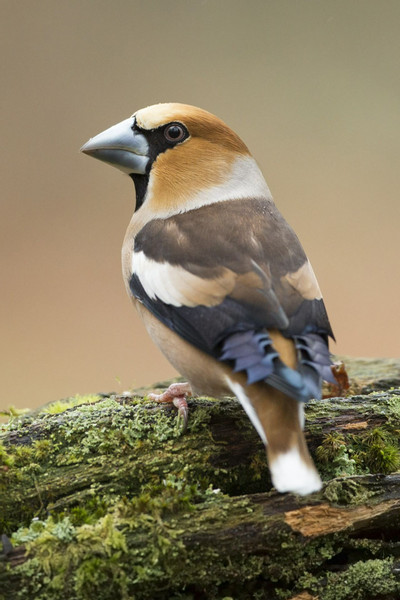Nature in the time of Covid
The Forest of Dean is sometimes referred to as the ‘Queen of all Forests’. Sandwiched cosily between the rivers Severn and Wye, it is home for Wild Boar, foxes, deer, badgers, Grey Squirrel and a vast variety of birds, and ducks.
I anticipated the trip with much excitement. I imagined the birds and ducks twittering and quacking amongst themselves,“here come the Naturetrek crowd, all expectant about viewing us in our natural world. Shall we give them a good show – or not? These humans are having a hard time of it this year, what with the pandemic and all… perhaps we ought not to disappoint.” And they did not!
On the first day we saw about 30 different species of wildlife: the dainty Nuthatches and exotic Mandarin Ducks being my favourites. However, the highlight of the day was yet to come – Wild Boar!
Evidence of them was everywhere. They partake in an activity called rooting – turning over the top of the turf on the roadside verges and areas of grassland. Although they can sometimes be spotted during the day, the best time to see them is night. After supper we ventured out, driving along black forest roads, armed with a powerful spot lamp. Our eyes peered into the darkness hoping to meet theirs. Shadowy limbs of oak and beech trees stood guard, like an army of forest giants hiding them from view.
Two hours passed and although we saw foxes and deer (Roe and Fallow), the boar eluded us. Disheartened, we decided to drive back to the hotel. Then, just before we arrived, a family of six boar trotted across the field beside us. My heart flipped like a pancake in my chest – a fleeting appearance, but unforgettable none the less. Such magnificent beasts. Happy – we went off to bed.
Next day a beautiful morning greeted us with only light scarves of cloud across the sky. Before breakfast we went in search of Hawfinches; they are the largest of the finch family and sadly in decline in Britain.

As passerine birds they enjoy surveying the world from the branches of tall trees, making them difficult to spot from the ground. They have colourful feathers, but their most defining feature is their wide conical beak. Luckily for us our very knowledgeable guide knew where we might find them – and we did – 5 of them – male and female. For the second time my heart did that pancake flip in my chest.
On our final day we travelled down to the Somerset Levels. It was raining – a good day for ducks. We saw Wigeon, Shoveler, Teal, Gadwall, Mallard and Coot. The most thrilling birdlife for me on this day was sighting all three types of egret: the Great White, the Cattle and the Little White. A quick glance of a Jack Snipe was also a treat, apparently they’re a most secretive bird.
As day moved towards dusk the rain stopped. We travelled further south in the hope of sighting a murmuration of Starlings, and we did. A huge synchronized aerial display, accompanied by full-throated choral acoustics. This acrobatic celebration set against the backdrop of a blood orange sunset with Lapwings dancing below was totally mesmerizing!
My heart did three flips in my chest when a Sparrowhawk and a Peregrine Falcon swooped in for a ready meal. This sent the Starlings into a furious dance, pressing closer together – an instinctive ploy to protect themselves against the predators. The Peregrine is the fastest bird in the world, flying up to 200 miles per hour. Too fast for our eyes to follow closely, but what a cabaret!
As the light began to fade, the birds as if by a secret signal decided it was time to funnel down into the reed bed, instantly transforming it into a sea of black. “The show is over,” I imagined them saying. “We have given you free theatre – a real-life and death performance. Now please go – leave us to roost in peace.” As we walked away in the fading light, we were aware of silence enveloping us now that the clamour of the birds had ceased.
In this year of the pandemic surrounded by so much uncertainty, restriction and fear, this three-day trip has been a real tonic and a reassuring experience; seeing the natural world in all its glory – just carrying on, and providing us humans with heart-filling as well as heart-flipping moments.
Thank you Naturetrek.



 Loading search...
Loading search...
